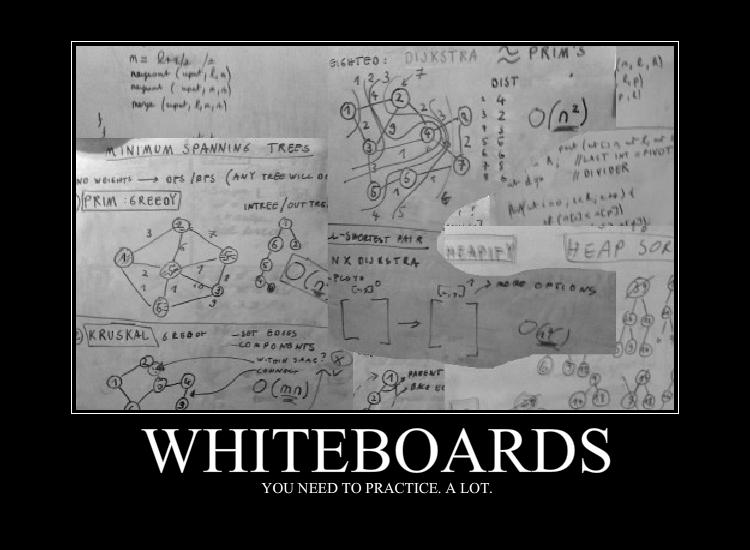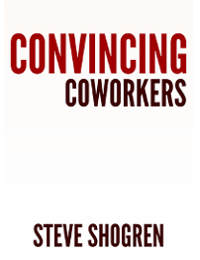After my post Interview Humiliation, a number of people have asked me how I interview compassionately. I strive to make my interviews as stress-free and respectful as possible while still rendering a yes/no at the end.
Any good interview process needs to start with goals:
- Respect the candidate’s time
- Make the candidate comfortable
- Under-skilled candidates should feel no shame
- Both passing and failing candidates should want to tell their friends to apply
- We should render the same decision if the interview is repeated multiple times (with different exercises each time)
- The candidate should know the process in advance and not be able to earn a pass through short term “cramming”
- The candidate should feel we are all working collaboratively, instead of us against them
The Ideal Candidate

We want to hire for high-level skills. Fast learning, strategic thinking, good design, and emotional intelligence are more important than rote memorization. We care more about “ability to grow” than “current skills”. Our job does not involve whiteboard coding, puzzle questions, or anything that can be discovered with a decent IDE, so those are left out.
We care a lot about “no jerks”. We want our workplace to be fun, relaxing, and supportive. We want candidates who are comfortable being wrong and corrected regularly, and who can correct others politely.
We do not care about any question that could be easily be answered by Google. If an internet search can easily answer the question, it is pointless to care if the human in front of me happens to know it. Given the search revolution of the last decade, the value of memorized facts falls to almost zero. Facts as a proxy for actual job skill probably used to be accurate until the internet allowed every interview question to become public record.
Scoring
I hope someone one day invents a perfect productivity score! For now, counting bugs, features, correct answers, etc, are all proxies that poorly represent actual productivity. If those actually worked, why don’t we use them for raises, bonuses, and reviews? Because. They. Do. Not. Work.
Counting bugs, features, correct answers, etc, are all proxies that poorly represent actual productivity
A well-designed rubric can work. A rubric is a way of measuring the “un-measurable”. You probably have seen them in year-end reviews. A grid with categories on one side, and a 1-5 score with a paragraph explanation for each. We only score what has to be explained with a description from the interviewers.
“How was the candidate’s communication skills?”
“They misunderstood me only a few times, and I only had trouble understanding them once or twice. The watchers all felt like the communication was pretty good. They were definitely above average: 3/4.”
“How about design skills?”
“They were able to clearly design every abstraction. They deeply understood passing functions as values, see how this takes a function for polymorphism? We prodded a bit, and they were able to give a couple other ways to achieve the same behavior. We all agreed it was best the way it was. All said, they did most of the heavy lifting for this whole project, and it is superbly designed: 4/4”
Our Process
To “level-set” our expectations, we had several of our developers at different levels perform the interview live in front of the team. We made them use various languages and exercises they had never seen before. This “level-setting” helped us to see how known good developers perform when way out of their element and uncomfortable.
All interviews are assigned to developers randomly, and all are expected to participate. The candidate should have two developers around at all time, to prevent bias by any individual. One pairs while the others rotate watching silently. The watchers are expected to stay quiet, to prevent confusion.
Before the first interview, the candidate is sent something very much like this document. We think there is no way someone could “fake us out” on any criteria. The things we look for take years of practice to cultivate, so “cramming” should not help much (if at all). The one exception to that is if they have never heard of Test Driven Development, we do recommend they Google it for a few minutes, as prior knowledge helps smooth the phone screen considerably.
Phone Screen
We pair program over the internet using a shared programming environment called Cloud9. We (currently) have projects set up for Java, JavaScript, Python, Ruby, and C#. The candidate may choose their desired language. We then pair program using Test Driven Development to build out a well defined exercise. The candidate may entirely verbally “navigate”, while one of our programmers entirely “drives” and types out the code. This is acceptable.
If the candidate has never seen any of those languages, Google or asking the interviewer is totally fair game, and does not count against them. If the candidate has completely no idea, the interviewer is expected to politely complete the task while keeping the candidate engaged.
The phone screen is under an hour, with 30 minutes for the pair programming. The remaining time is for questions about our office. We let them drive the second half of the interview, asking us questions about what our team and process is like. We attempt to answer clearly and honestly, both good and bad.
In-Person
The in-person interview is from 9:30 to 3:00. We are not thrilled with how much time it takes and would like to shorten it, but so far have no superior alternatives.
At the start of the day, we spend 30 minutes chatting and asking questions back and forth. Our questions are meant to tell us about the candidate’s background and “programming philosophy”: books read, favorite languages, interesting projects they’ve worked on, etc. We allow them as many questions as they would like.
The rest of the day is very much like a “typical day at work”, but with programming exercises instead of production code. We pair program on the exercises, following the same flow from the phone screen. The exercises have no “tricks”, they are reasonably straightforward and don’t require any prior domain or CS theory knowledge. Throughout the day, the candidate is free to get food, drinks, and run to the restroom.
The developer who is pairing has a primary role of making the candidate feel comfortable and accomplish any effort with a 50/50 split of effort. If the candidate really is struggling, the developer is expected to keep working with the candidate, even to the point of doing the hard parts and giving them the easy parts. A completely unskilled candidate will see their pair doing all the work with a smile and politely asking for “help” with variable names and such.
The developer pair is also expected to give the candidate some time to think if they are lost. The candidate at the end of the interview should feel like they have a complete understanding of what happened. The exercises are designed to be “too much to finish”, and as such finishing the exercises is not a success criteria as much as working well together and writing maintainable code.
We feel this gives us a highly accurate understanding of a candidate’s skill, while still putting them at ease. Many times we’ve seen a terrified candidate light up fifteen minutes into a pairing session while watching their developer pair do most of the work. Something about seeing code written “activates” even the most nervous candidate. All the thoughts of nerves turn into a concrete “oh, wait, I know what he just did, and I’ve got an opinion on that!”
Conclusion
We like this process because it is exactly what our job is like. We pair program for a lot of work, and the interview is meant to give candidates a sample of that. No one should show up for their first day of work and say, “wait, I actually hate pair programming.” By thinking through our goals and an “ideal candidate”, we were able to design a process that meets those goals.
I recommend you take an hour to write out your goals and needs. Then see how your interview process matches. Are you looking for a “human Google”? Does your job involve whiteboard coding? Would telling the candidate the exact process in advance with all the questions let them game the system? Because every single interview question I’ve seen is up on Google to be found and memorized on easy to read lists. How much time does your process take? Could it be shortened? Does it require the candidate to spend a lot of time at home? You might be surprised at what you find!

